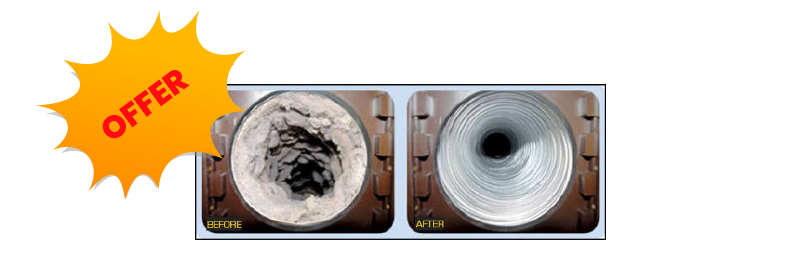Call Us:
1800-CHIMNEY
530 - 386 - 5955
Why the smoke?
I just had my chimney swept recently and it seems to not work again.
What is happening?
Sometimes a wood-burning system can develop issues within a short period after the cleaning. Most of the causes are avoidable and here are some of the reasons your stove, fireplace or insert may experience draft problems:
Low Quality Fuel – Check your Spark Arrestor
Insufficient Combustion air – aka “Dampering down” or “Choking
Negative pressure within the home.
The fire you are starting is too small
Baffle plate or Baffle Bricks misaligned.
Stack Effect (only if you have 2 or more fireplaces)
1. Low quality fuel can mean 2 things:
- A. Softwood like Pine or Fir, great for starting fires and burns easily . but high in sap content, low BTU output.
- B. Any Softwood or Hardwood high in moisture content over 20% (either insufficiently seasoned or the wood was exposed to rain/snow during storage).
This kind of fuel does not create a combustion environment hot enough to avoid “incomplete combustion”. As a result (even though there is a fire) there will be a lot of unburned gases and VOC’s (volatile organic compounds) travelling through the chimney. As soon as these molecules leave the firebox they cool down within the chimney and connect with the moisture that is escaping wood at the same. That is the creation of creosote flakes which will eventually clog your system or the spark arrester screen on the chimney cap. In other words, the weaker the fuel, the quicker it can clog your system. With daily use of green (unseasoned) or really wet wood a chimney can develop issues even in 1 month since the sweep!
SOLUTION: Inspect the wood you buy to make sure it has been seasoned. Store your wood away from moisture, do not burn cardboard or treated construction lumber, pinecones or bark.
See firewood tips here: https://www.youtube.com/watch?v=c2g5WPS63RM
Check your spark arrestor screen around your chimney cap, you should be able to see through it when viewing from street level. If it appears solid black, it is most likely clogged and needs to be brushed.

2. Insufficient Combustion air – aka “dampering down”
Dampering down is achieved by limiting the amount of oxygen available to the fire. Most stoves and inserts are equipped with an air control lever or knob. Choking is most useful when you want to load up the firebox and leave it burning slowly through the night. There are, however, negative consequences of this option:
- Lack of oxygen creates low firebox temperatures and leads to poor combustion (smouldering). Just like with poor fuel, creosote accumulation can speed up tremendously and clog your system even with good fuel.
- Dark deposits on the glass
SOLUTION: Give your fire some more air. If you need a longer burn, use hardwood (oak, walnut, almond) instead of softwood (pine, fir). Hardwood is more dense and burns longer and hotter promoting less creosote in your system.
Check you spark arresor also, see point 1.
3. Negative pressure within the home.
Even the cleanest and newest system will not work against negative pressure within the home. Wood-burning causes oxygen and air to be constantly removed from the house and this process lowers the air pressure indoors. When the pressure drops too low the house will want to re-pressurize and suck air in through the paths of least resistance. In many cases that path is your chimney and the smoke may be drawn back into the home as a result.
What causes the pressure to be too low?
- Tight home construction or recently upgraded doors, windows, insulation etc.
- Simultaneous use of Clothes Dryer, Kitchen Range hood, bathroom fans, furnaces. Anything that has an outdoor vent and removes air from the home will cause low pressure
Why does the house never run out of air then? In most homes opening the door or window for a few seconds does the job. In older homes full of countless “construction imperfections” the make-up air is drawn in through all available openings and cracks. In tighter structures and new homes with high performance insulation, doors and windows you may need to create an opening to bring in fresh air into the home or install an outside air kit for your wood-burning appliance.
4. The fire you are starting is too small
If your fireplace is cold and you are just starting the fire be aware that your chimney is also cold and there is a column of cold air sitting in your chimney.Cold air is “heavier” than warm air. The first thing you must do is establish a good draft so the fire you are building can sustain itself. You must create a somewhat sudden surge of heat in the firebox in order to push th column of cold air out. This is most easily done by filling up the firebox first with a good amount of crumpled up paper (regular newspaper kind, but stay away from anything glossy, with lots of ink or cardboard). Light up the paper at once in many locations so it all ignites at roughly the same time. The “ball” of fire achieved this way should push the cold air out of your chimney and get you draft going upward. While the paper is burning you can add kindling (small and thin wood pieces) and continue with medium size pieces once the kindling if well lit. Leaving the door cracked about 1” for a few minutes (attended) can also help feed more oxygen into the firebox and get the fire going faster.
5. Baffle plate or Baffle Bricks misaligned (stoves and inserts only)
Baffle is usually made of a heavy 1/4″ thick steel plate or a combination of firebricks resting on top of airtubes or steel supports. Baffle plates or baffle bricks are located on the “ceiling” of the firebox interior. Look inside the stove or the insert above the door opening to make sure the baffle is pushed towards the back of the firebox leaving an approx 2″ gap at the front for the smoke to flow through. The Baffle may have become misaligned/moved last time the wood was loaded.

6. Stack Effect (only if you have 2 or more fireplaces)
Without getting too scientific, the fireplace on the lower level of the house is always more likely to draw cold air into the house and be more difficult to start and sustain a fire in than the one uptairs. As heat in the home rises (especially if you have fire going in the upstairs fireplace) air constantly being removed from the home leading to low pressure. The lower part of the house will always have the lowest pressure and the home wanting to make up for it will draw air through the ath of lest resistance which often is the chimney itself. Solution: rubber-seal top damper installed on top of the lower fireplace chimney and a 2-4 foot extension of the upper fireplace chimney.

Tahoe Chimney & Fireplace guarantees a professional cleaning of your system and we are here to help. Unfortunately, even your chimney was re-swept, the issues will return if the causes are not addressed. If you need any further assistance, feel free to call us anytime with any questions, we’ll find a solution.
General Wood burning tips video: https://www.youtube.com/watch?v=cMTD-p4CgWw













